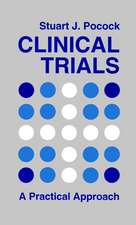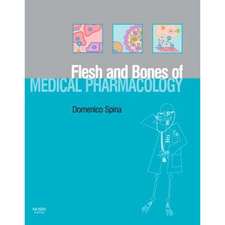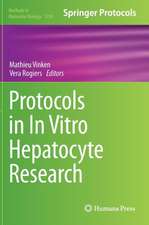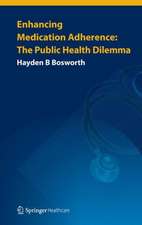Pharmacology of the Eye: Handbook of Experimental Pharmacology, cartea 69
Editat de M. L. Sears Contribuţii de G.J. Chaderen Limba Engleză Paperback – 29 dec 2011
Din seria Handbook of Experimental Pharmacology
- 5%
 Preț: 3517.78 lei
Preț: 3517.78 lei - 5%
 Preț: 1425.97 lei
Preț: 1425.97 lei - 5%
 Preț: 1435.28 lei
Preț: 1435.28 lei - 5%
 Preț: 1430.52 lei
Preț: 1430.52 lei - 5%
 Preț: 1930.69 lei
Preț: 1930.69 lei - 5%
 Preț: 1922.47 lei
Preț: 1922.47 lei - 5%
 Preț: 1937.46 lei
Preț: 1937.46 lei - 5%
 Preț: 2117.58 lei
Preț: 2117.58 lei - 5%
 Preț: 2119.96 lei
Preț: 2119.96 lei - 5%
 Preț: 2117.38 lei
Preț: 2117.38 lei - 5%
 Preț: 1088.15 lei
Preț: 1088.15 lei - 5%
 Preț: 1098.27 lei
Preț: 1098.27 lei - 5%
 Preț: 1420.29 lei
Preț: 1420.29 lei - 5%
 Preț: 1104.84 lei
Preț: 1104.84 lei - 5%
 Preț: 1104.84 lei
Preț: 1104.84 lei - 5%
 Preț: 1108.14 lei
Preț: 1108.14 lei - 5%
 Preț: 1106.69 lei
Preț: 1106.69 lei - 5%
 Preț: 1105.77 lei
Preț: 1105.77 lei - 5%
 Preț: 1174.35 lei
Preț: 1174.35 lei - 5%
 Preț: 408.48 lei
Preț: 408.48 lei - 5%
 Preț: 409.63 lei
Preț: 409.63 lei - 5%
 Preț: 539.89 lei
Preț: 539.89 lei - 5%
 Preț: 720.47 lei
Preț: 720.47 lei - 5%
 Preț: 733.09 lei
Preț: 733.09 lei - 5%
 Preț: 731.27 lei
Preț: 731.27 lei - 5%
 Preț: 746.43 lei
Preț: 746.43 lei - 5%
 Preț: 747.72 lei
Preț: 747.72 lei - 5%
 Preț: 725.24 lei
Preț: 725.24 lei - 5%
 Preț: 742.80 lei
Preț: 742.80 lei - 5%
 Preț: 393.23 lei
Preț: 393.23 lei - 5%
 Preț: 735.66 lei
Preț: 735.66 lei - 5%
 Preț: 728.33 lei
Preț: 728.33 lei - 5%
 Preț: 389.52 lei
Preț: 389.52 lei - 5%
 Preț: 730.71 lei
Preț: 730.71 lei - 5%
 Preț: 740.58 lei
Preț: 740.58 lei - 5%
 Preț: 730.19 lei
Preț: 730.19 lei - 5%
 Preț: 723.42 lei
Preț: 723.42 lei - 5%
 Preț: 731.27 lei
Preț: 731.27 lei - 5%
 Preț: 726.68 lei
Preț: 726.68 lei - 5%
 Preț: 3516.49 lei
Preț: 3516.49 lei - 5%
 Preț: 729.26 lei
Preț: 729.26 lei - 5%
 Preț: 737.11 lei
Preț: 737.11 lei - 5%
 Preț: 730.92 lei
Preț: 730.92 lei - 5%
 Preț: 738.78 lei
Preț: 738.78 lei - 5%
 Preț: 909.94 lei
Preț: 909.94 lei - 5%
 Preț: 720.10 lei
Preț: 720.10 lei - 5%
 Preț: 734.74 lei
Preț: 734.74 lei - 5%
 Preț: 727.80 lei
Preț: 727.80 lei - 5%
 Preț: 3513.38 lei
Preț: 3513.38 lei
Preț: 747.35 lei
Preț vechi: 786.68 lei
-5% Nou
Puncte Express: 1121
Preț estimativ în valută:
143.00€ • 149.02$ • 118.41£
143.00€ • 149.02$ • 118.41£
Carte tipărită la comandă
Livrare economică 03-17 aprilie
Preluare comenzi: 021 569.72.76
Specificații
ISBN-13: 9783642692246
ISBN-10: 3642692249
Pagini: 768
Ilustrații: XXVI, 738 p.
Dimensiuni: 170 x 244 x 40 mm
Greutate: 1.2 kg
Ediția:Softcover reprint of the original 1st ed. 1984
Editura: Springer Berlin, Heidelberg
Colecția Springer
Seria Handbook of Experimental Pharmacology
Locul publicării:Berlin, Heidelberg, Germany
ISBN-10: 3642692249
Pagini: 768
Ilustrații: XXVI, 738 p.
Dimensiuni: 170 x 244 x 40 mm
Greutate: 1.2 kg
Ediția:Softcover reprint of the original 1st ed. 1984
Editura: Springer Berlin, Heidelberg
Colecția Springer
Seria Handbook of Experimental Pharmacology
Locul publicării:Berlin, Heidelberg, Germany
Public țintă
ResearchCuprins
1 The History of Ophthalmic Therapeutics With 7 Figures.- References.- 2 Ocular Pharmacokinetics With 20 Figures.- Abbreviations.- A. Introduction.- I. Objectives.- II. Compartments and Barriers.- III. Routes of Administration and Penetration.- 1. Topical Administration.- 2. Local Injection.- 3. Systemic Administration.- IV. Animal Models and Human Experimentation.- 1. Animal Models.- 2. Human Experiments.- B. Topical Administration.- I. Factors Involved in Intraocular Penetration.- 1. The Tears and Contact with Ocular Surface.- 2. Corneal Penetration.- 3. Conjunctiva and Sclera.- 4. Intraocular Structures.- 5. Metabolism of Drugs During Intraocular Penetration.- II. Compartmental Analysis.- 1. Compartmentation.- 2. Two-Compartment Model.- 3. Tear Patterns.- 4. Other Compartments.- 5. Kinetics of Ocular Responses to Drugs.- 6. Parameter Determination.- III. Conclusions and Recommendations.- C. Local Injections.- I. Subconjunctival.- 1. Regurgitation.- 2. Depot Dynamics.- 3. Aqueous Humor Concentration.- 4. Entry Pathways.- 5. Vitreous Penetration.- 6. Retrobulbar Injection.- II. Intravitreal Injection.- 1. Diffusion in Vitreous.- 2. Loss from the Vitreous Chamber.- 3. Drug Kinetics.- 4. Application to Humans.- D. Systemic Administration.- I. Intraocular Drug Penetration.- 1. Structures Related to Entry from Blood.- 2. The Blood-Vitreous Barrier.- 3. Chemical Factors in Drug Penetration.- 4. Drug Distribution in the Eye.- II. Compartmental Analysis.- 1. Formulation of Aqueous Humor Dynamics.- 2. One-Compartment Approximation.- 3. Changes in Aqueous Concentration.- 4. Kinetics of Intracameral Penetration.- 5. Penetration into the Vitreous.- 6. Penetration into the Cornea and Lens.- III. Conclusions and Recommendations.- E. Kinetics in Ocular Disease.- I. Inflammation andits Models.- II. Effects on Ocular Parameters.- 1. Permeability.- 2. Active Transport.- 3. Vasomotor Effects.- III. Effects on Drug Kinetics.- 1. Topical Application.- 2. Systemic Penetration.- 3. Periocular Injection.- 4. Intravitreal Injection.- F. Conclusion.- References.- 3 Biotransformation and Drug Metabolism With 25 Figures.- A. Introduction.- B. Hepatic Drug-Metabolizing Systems.- I. Microsomal Electron Transport Systems (Phase I Enzymes).- 1. Cytochrome P-450.- 2. NADPH · Cytochrome P-450 Reductase.- 3. Cytochrome b5 and NADH · Cytochrome b5 Reductase.- II. Reactions Catalyzed by the Cytochrome P-450 System.- 1. Oxidative Reactions.- 2. Reductive Reactions.- III. Conjugation Reactions (Phase II Reactions).- 1. Glucuronidation.- 2. Sulfation.- 3. Acetylation.- 4. Conjugation with Amino Acids.- 5. Methylation.- 6. Conjugation with Glutathione.- IV. Induction of Drug-Metabolizing Enzymes.- C. Ocular Drug Metabolism.- I. Aryl Hydrocarbon Hydroxylase Induction in the Eye.- II. Tissue Distribution of Drug-Metabolizing Enzymes in the Eye.- III. Drug Toxicity — An Experimental Approach.- D. Concluding Remarks.- References.- 4 Cholinergics With 11 Figures.- A. Chemistry Related to Biological Activity.- I. Cholinergic Neurotransmission.- II. Direct-Acting Agonists.- 1. Muscarinic Agents.- 2. Nicotinic Agents.- III. Indirect-Acting Agonists: Anticholinesterases.- 1. Carbamates.- 2. Organophosphorous Compounds.- B. Ocular Anatomy/Physiology Relevant to Cholinergic Mechanisms: Acute Effects of Cholinergic Drugs.- I. Lacrimation.- II. Cornea.- III. Lens.- IV. Pupillary Movement and Accommodation.- V. Aqueous Humor Formation, Removal, and Composition; Blood-Aqueous Barrier.- 1. Basic Anatomy and Physiology.- 2. Acute Effects of Cholinergic Drugs.- VI. Retina.- VII.Oculorotary and Respiratory Skeletal Muscles.- C. Longer-Term Effects of Cholinergic Drugs or Altered Cholinergic Neurotransmission.- I. Cholinergic Sensitivity in Ocular Smooth Muscles.- 1. Physiologically and Pharmacologically Induced Alterations.- 2. Disease-Induced Alterations.- 3. Surgically Induced Alterations.- II. Cholinergic Toxicity.- 1. Lens (Cataractogenesis).- 2. Iris/Ciliary Muscle/Trabecular Meshwork.- References.- 5 a Autonomic Nervous System: Adrenergic Agonists With 21 Figures.- A. Introduction.- B. Cellular Sites and Mechanism of Adrenergic Action.- C. Modulation and Interaction of Receptor Types.- D. Sensitivity.- E. Stereoisomerism.- F. Storage, Release, and Degradation.- I. Monoamine Oxidase.- II. Catechol-O-methyltransferase.- G. Pharmacokinetics.- I. Penetration.- II. Distribution and Accumulation.- III. Duration.- IV. Action of Drugs on Intraocular Pressure.- H. Tissue Functions.- I. Lacrimal Gland.- II. Cornea and Lens.- III. Iris.- J. Blood Flow.- K. Intraocular Pressure.- L. Other Interactions.- I. Guanyl Cyclase.- II. Steroids and Adrenergics.- III. Adrenergics and Prostaglandins.- IV. Adrenergics and Ocular Pigment.- M. Retina.- References.- 5b Autonomic Nervous System: Adrenergic Antagonists.- A. Introduction.- B. Beta-Adrenergic Antagonists.- I. Animal Pharmacology.- 1. Intraocular Pressure.- 2. Aqueous Humor Dynamics.- 3. Interactions with Beta-Adrenergic Receptors in the Eye.- 4. Mechanisms of Action on Intraocular Pressure.- 5. Ocular Penetration and Distribution.- 6. Other Ocular Pharmacology.- II. Clinical Pharmacology.- 1. Intraocular Pressure.- 2. Aqueous Humor Dynamics.- 3. Beta-Adrenergic Receptor Blockade in the Eye.- 4. Mechanisms of Action.- 5. Ocular Penetration.- C. Alpha-Adrenergic Antagonists.- I. Animal Pharmacology.- 1.Selective Alpha-Adrenergic Antagonists.- 2. Alpha- and Beta-Adrenergic Antagonists (Labetalol).- II. Clinical Pharmacology.- References.- 6 Carbonic Anhydrase: Pharmacology of Inhibitors and Treatment of Glaucoma With 10 Figures.- A. History.- B. Pharmacology of the Clinically Used Carbonic Anhydrase Inhibitors..- C. Physiology of Ocular Carbonic Anhydrase Inhibition.- I. Aqueous Humor Dynamics.- II. Aqueous Flow.- III. Relation to Pressure.- IV. Chemical Mechanisms of Flow.- V. Relation to Systemic Effects.- VI. Pharmacology of the Inhibitors Related to Ocular Effect and Enzyme Inhibition.- D. Clinical Uses of Carbonic Anhydrase Inhibitors.- I. Glaucoma.- II. Miscellaneous Uses and Effects.- E. Urolithiasis with Carbonic Anhydrase Inhibitors.- F. Other Toxic Effects.- G. Summary.- References.- 7 Autacoids and Neuropeptides With 5 Figures.- A. Introduction.- B. Prostaglandins, Prostacyclin, Thromboxane, and Lipoxygenase Products.- I. General Background.- II. Occurrence and Biosynthesis in the Eye.- III. Elimination.- IV. Effects in the Eye.- 1. Blood Flow.- 2. Blood-Aqueous Barrier and Formation of Aqueous Humor.- 3. Intraocular Pressure.- 4. Outflow of Aqueous Humor.- 5. Iridial and Ciliary Smooth Muscles.- 6. Miscellaneous Effects.- V. Interaction with the Autonomic and Sensory Nervous Systems in the Eye.- VI. Pathophysiological Considerations.- 1. Immediate Response to Injury of the Eye.- 2. Inflammation of the Eye.- 3. Other Disorders in the Eye Possibly Involving Prostaglandins.- C. Histamine.- I. General Background.- II. Occurrence and Effects in the Eye.- III. Pathophysiological Considerations.- D. 5-Hydroxytryptamine.- I. General Background.- II. Occurrence and Effects in the Eye.- E. Plasma Kinins.- I. General Background.- II. Effects in the Eye.- F. The Renin-Angiotensin System.- I. General Background.- II. Occurrence in the Eye.- G. Substance P.- I. General Background.- II. Distribution in the Eye.- III. Effects in the Eye.- 1. Retina.- 2. Iridial Smooth Muscles.- 3. Ocular Circulation and Blood—Aqueous Barrier.- 4. Intraocular Pressure.- 5. Formation and Outflow of Aqueous Humor.- H. Enkephalins.- I. General Background.- II. Occurrence and Effects in the Eye.- J. Neurotensin.- K. Hypothalamic Peptides Regulating the Adenohypophysis.- I. Somatostatin.- II. Thyrotropin-Releasing Hormone.- III. Luteinizing-Hormone-Releasing Hormone.- L. Peptide Hormones Secreted by the Neurohypophysis.- I. General Background.- II. Effects of Antidiuretic Hormone in the Eye.- III. Effects of Oxytocin in the Eye.- M. Melanocyte-Stimulating Hormones.- I. Effects in the Eye.- N. Vasoactive Intestinal Polypeptide.- I. General Background.- II. Localization and Effects in the Eye.- O. Glucagon.- P. Gastrin/Cholecystokinin.- Q. Summary.- References.- 8 Vitamin A With 6 Figures.- A. Introduction.- B. Retinoid Structure.- C. Retinoid Properties.- D. Retinoid Identification.- I. Spectral Methods.- II. Fluorescence Methods.- III. Colorimetric Methods.- IV. High-Pressure Liquid Chromatography.- E. Retinoid Metabolism.- F. Retinoid Uptake.- G. Retinoid Action.- I. The Visual Process.- II. Glycoprotein Biosynthesis.- III. Hormone-like Action.- References.- 9 Anti-Infective Agents.- A. Introduction.- B. Accurate Diagnosis and Drug Choice.- I. Mechanisms of Action.- II. Penetration and Absorption.- 1. Protein and Tissue Binding.- 2. The Blood-Aqueous Barrier.- 3. Physicochemical Influences.- 4. Aqueous and Uveoscleral Outflow.- III. Limiting Factors.- 1. Age.- 2. Renal Disease.- 3. Liver Disease.- 4. Enzymes.- 5. Pregnancy.- 6. Ocular Damage and Disease.-IV. Routes of Administration.- 1. Topically Applied Antibiotic Drops.- 2. Continuous Corneal Lavage with Antibiotic Solutions.- 3. Subconjunctival Injections of Antibiotics.- V. Use of Antibiotics in Combination.- 1. Prevention of Emergence of Drug-Resistant Mutants.- 2. Treatment of Mixed Infections.- 3. Initial Treatment of Vision-Threatening Infections.- 4. Antibiotic Synergism and Antagonism.- VI. Adverse Drug Interactions.- C. Postoperative Intraocular Infections (Endophthalmitis).- I. Incidence.- II. Results of Therapy.- III. Contributory Factors.- 1. Sources of Infection in the Surgical Environment.- 2. Ophthalmic Operative Area.- 3. Influence of Host Tissue.- 4. Organisms Responsible for Intraocular Infection.- IV. Antibiotic Prophylaxis.- V. Use of Steroids.- VI. Vitrectomy.- D. Antibiotics.- I. Penicillin Derivatives.- 1. Ampicillin.- 2. Amoxicillin.- 3. Carbenicillin.- 4. Ticarcillin.- II. Probenecid.- III. Cephalosporins.- IV. Aminoglycosides.- 1. Streptomycin and Dihydrostreptomycin.- 2. Gentamicin.- 3. Tobramycin.- 4. Neomycin.- 5. Kanamycin.- 6. Amikacin.- 7. Spectinomycin.- 8. Others.- V. Erythromycin.- VI. Lincomycin.- VII. Clindamycin.- VIII. Oleandomycin.- IX. Carbomycin.- X. Spiramycin.- XI. Novobiocin.- XII. Ristocetin.- XIII. Vancomycin.- XIV. Bacitracin.- XV. Polymyxin B.- XVI. Soframycin.- XVII. Colistin.- XVIII. Sulfonamides.- XIX. Trimethoprim-Sulfamethoxazole.- XX. Chloramphenicol.- 1. Penetration and Absorption.- 2. Toxicity and Side Effects.- XXI. Tetracyclines.- 1. Penetration and Absorption.- 2. Fluorescence.- 3. Toxicity and Side Effects.- XXII. Pyrimethamine.- 1. Value.- 2. Toxicity.- 3. Penetration and Dosage.- XXIII. Drugs Used in the Treatment of Fungal Infections.- 1. Griseofulvin, Nystatin, and Amphotericin B.- 2. 5-Fluorocytosine.- 3. Imidazoles.- XXIV. Diethylcarbamazine in the Treatment of Onchocerciasis.- References.- 10a Anti-Inflammatory Agents: Steroids as Anti-Inflammatory Agents With 18 Figures.- A. Introduction.- B. Historical Development.- I. Cortisone.- II. Use of Steroids in Ophthalmology.- C. Steroid Therapy.- I. Activity of Steroid Compounds.- 1. Potency.- 2. Absorption and Distribution.- 3. Metabolism.- II. Routes of Administration.- 1. Topical.- 2. Periocular.- 3. Systemic.- 4. Intravitreal.- III. Therapeutic Approaches.- 1. Specific Clinical Problems and Controversies.- 2. Current Assessment.- IV. Complications.- 1. Glaucoma.- 2. Cataract.- 3. Other Ocular Effects.- 4. Systemic Complications.- D. Cellular and Molecular Mechanisms.- I. The Immune System.- 1. Leukocyte Kinetics and Function.- 2. Vascular and Inflammatory Effects.- 3. Ocular Immune Mechanisms.- II. The Glucocorticoid Receptor.- 1. The Target Cell.- 2. Cellular Sensitivity and Modulation of Steroid Responses.- 3. Permissive Effects and Hormonal Interactions.- 4. Glucocorticoid Receptors in Ocular Tissues.- 5. Implications.- References.- 10b Anti-Inflammatory Agents: Nonsteroidal Anti-Inflammatory Drugs With 4 Figures.- A. Introduction.- B. Mechanism of Action of Nonsteroidal Anti-Inflammatory Drugs.- C. Salicylates.- D. Indomethacin.- E. Pyrazolon Derivatives.- F. Propionic Acid Derivatives.- G. Anthranilic Acid Derivatives.- References.- 11 Chemotherapy of Ocular Viral Infections and Tumors With 6 Figures.- A. Introduction.- B. Clinically Available Antiviral Agents.- I. 5-Iodo-2?-deoxyuridine (Idoxuridine).- 1. Synthesis.- 2. Antiviral Activity.- 3. Effects on Normal Cells.- 4. Mechanism of Action.- II. 9-?-D-Arabinofuranosyladenine (Adenine, Arabinoside, Vidarabine).- 1. Synthesis.- 2. Antiviral Activity.- 3.Effects on Normal Cells.- 4. Mechanism of Action.- III. 5-Trifluoromethyl-2?-deoxyuridine (Trifluorothymidine, Viroptic, Trifluridine).- 1. Synthesis.- 2. Antiviral Activity.- 3. Effects on Normal Cells.- 4. Mechanism of Action.- C. Newer Agents Under Development.- I. 9-(2-Hydroxyethoxymethyl)guanine (Acyclovir, Acycloguanosine).- 1. Synthesis.- 2. Antiviral Activity.- 3. Effects on Normal Cells.- 4. Mechanism of Action.- II. 5-Ethyl-2?-deoxyuridine (Aedurid).- 1. Synthesis.- 2. Antiviral Activity.- 3. Effects on Normal Cells.- 4. Mechanism of Action.- III. E-5-(2-Bromovinyl)-2?-deoxyuridine.- IV. l-(2-Deoxy-2-fluoro-?-D-arabinosyl)-5-iodo-cytosine.- V. 5-Iodo-5?-amino-2?,5?-dideoxyuridine.- 1. Synthesis.- 2. Antiviral Activity.- 3. Effects on Normal Cells.- 4. Mechanism of Action.- VI. Phosphonoacetate and Phosphonoformate (Foscarnet).- 1. Synthesis.- 2. Antiviral Activity.- 3. Effects on Normal Cells.- 4. Mechanism of Action.- References.- 12 Immunosuppressive Drugs With 8 Figures.- A. Introduction.- B. Alkylating Agents.- I. Chemical Structure and Metabolism.- II. Mode of Action.- III. Effects on the Immune System.- C. Antimetabolic Drugs.- I. Purine Analogs.- 1. Mode of Action.- 2. Effects on the Immune System.- II. Pyrimidine Analogs.- 1. Mode of Action.- 2. Effects on the Immune System.- III. Folic Acid Analogs.- 1. Mode of Action.- 2. Effects on the Immune System.- D. Cyclosporin A.- I. Mode of Action.- II. Effects on the Immune System.- E. Antilymphocyte Sera.- I. Preparations.- II. Mode of Action.- III. Effects on the Immune System.- IV. Adverse Side Effects.- F. Ionizing Irradiation.- G. Immunosuppressive Agents of Potential Future Use.- H. Immunosuppressive Agents in Ocular Conditions.- I. Cyclophosphamide.- II. Chlorambucil.- III.Azathioprine.- IV. Methotrexate.- V. Cyclosporin A.- VI. Antilymphocyte Sera.- VII. Adverse Side Effects.- References.- 13 Anticoagulants, Fibrinolytics, and Hemostatics With 3 Figures.- A. Introduction: The Hemostatic Mechanism.- B. Anticoagulants.- I. Direct Anticoagulants (Heparin).- II. Indirect Anticoagulants.- III. Contraindications: Precautions in Ophthalmology.- C. Fibrinolytics.- I. Commonly Used Fibrinolytic Agents.- 1. Streptokinase.- 2. Urokinase.- 3. Plasmin.- II. Therapeutic Thrombolysis: Effect on Hemostasis.- III. Fibrinolytics in Ophthalmology.- 1. Occlusion of the Central Retinal Vein.- 2. Hemorrhages in the Anterior Chamber and Vitreous Body.- D. Hemostatics.- I. Specific.- 1. Substitution Therapy.- 2. Antifibrinolytics.- II. Nonspecific.- References.- 14 Oxygen.- A. Introduction.- B. Oxygen and the Adult Eye.- C. Oxygen and the Immature Eye.- I. Retrolental Fibroplasia.- II. Monitoring Oxygen Administration in the Nursery.- D. Oxygen Interaction with Other Drugs.- I. Anti-Inflammatory Agents.- II. Antioxidants in Retrolental Fibroplasia.- 1. ?-Tocopherol.- 2. Superoxide Dismutase.- 3. Other Antioxidants.- E. Conclusions.- References.- 15 The Alipathic Alcohols.- A. General.- B. Ocular Effects of Single Doses of Ethanol in Nonhabituated Individuals.- I. Muscle Balance.- II. Extraocular Muscles in Action.- III. Nystagmus.- IV. Intraocular Muscles.- 1. The Iris.- 2. Accommodation.- V. Electrophysiological Measurements.- VI. Miscellaneous Measurements of Visual Function.- VII. Intraocular Pressure.- C. The Special Case of Disulfiram (Antabuse).- D. Chronic Alcoholism and the Eye.- E. Methanol.- References.- 16 Photosensitizing Substances With 1 Figure.- A. Direct Action of Ultraviolet Light on Skin.- I. Mechanism of Ultraviolet Action.- II. DirectAction of Light on the Eye.- B. Photosensitization.- I. Mechanism.- II. Ocular Effects.- C. Photosensitizing Substances.- I. Exogenous Photosensitizers.- II. Endogenous Photosensitizers.- D. Conclusions.- References.- 17 Trace Elements in the Eye With 1 Figure.- A. Introduction.- B. Iron.- C. Zinc.- D. Copper.- E. Selenium.- F. Vanadium.- G. Chromium.- H. Conclusion.- References.- 18 Clinical Trials.- A. A Strategy of Research.- B. Planning the Trial.- I. Defining the Research Goals.- II. Sample Size.- III. The Ethical Basis.- C. Conducting the Trial.- I. Bias.- II. Data Monitoring.- III. Follow-up.- D. Analysis of the Results.- I. Adherence.- II. Eyes Come in Twos.- III. Variable Duration of Follow-up.- IV. Tests of Significance and Data Analysis.- E. A Greater Awareness.- References.- 19a Diagnostic Agents in Ophthalmology: Sodium Fluorescein and Other Dyes With 1 Figure.- A. Sodium Fluorescein.- I. Introduction.- II. Defects of the Corneal and Conjunctival Epithelia.- III. Use for Applanation Tonometry.- IV. Fitting of Contact Lenses.- V. Assessment of the Lacrimal System.- VI. The Seidel Test — Documentation of Appearance of Aqueous Humor in the Cul-de-Sac.- VII. Measurement of the Rate of Aqueous Humor Formation.- VIII. Measurement of Arm—Retina Circulation Times and Retinal Transit Times.- IX. Fundus and Iris Fluorescein Angiography.- X. Assessment of the Blood-Ocular Barriers.- 1. Aqueous Fluorophotometry.- 2. Vitreous Fluorophotometry.- 3. Histopathology.- B. Rose Bengal.- C. Indocyanine Green.- D. Other Dyes for Retinal and Choroidal Angiography.- E. Other Dyes for Vital Staining of the Conjunctiva and Cornea.- References.- 19b Diagnostic Agents in Ophthalmology: Drugs and the Pupil.- A. Introduction.- B. The Sympathetic Nervous System.- I. Epinephrine.-II. Cocaine.- III. Hydroxy amphetamine.- C. The Parasympathetic Nervous System.- D. Distinction Between Pharmacologic Blockade and Oculomotor Nerve Palsy.- E. Diagnosis of Accommodative Esotropia.- References.












